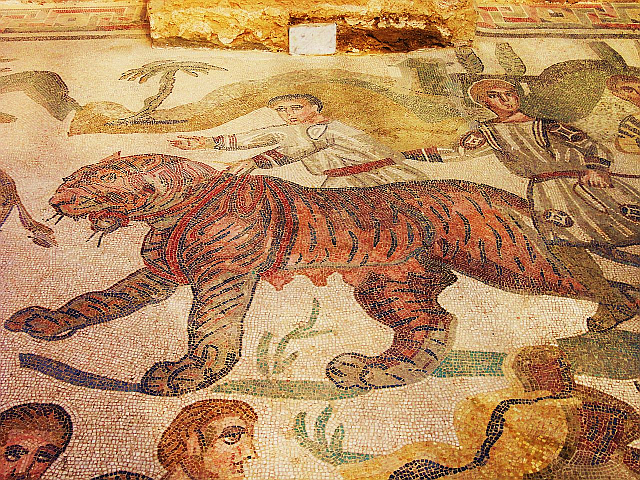The legendary beginnings of the city of
Heracleion include Helen and Paris, as well as its namesake:
It was believed that Paris and Helen of Troy were stranded there on their flight from the jealous Menelaus, before the Trojan war began. Also, it was believed that Heracles himself had visited the city, and that the city had gained its name from him.
The city's name is a small indication of the afterlife of Heracles, a truly outsized hero even by Greek standards:
Greek texts referred to a place called Heracleion. The Egyptians had a city called Thonis. For centuries, Egyptologists puzzled over these two cities, but in 2000, French underwater archeologist Franck Goddio solved the mystery: Thonis and Heracleion were two names for the same place.
In the 5th century BC, Greek historian Herodotus wrote that a great temple was built where the hero Heracles first stepped onto Egyptian soil (hence the name).
Located in Aboukir Bay and founded around the 8th century BC, the city thrived as Egypt’s primary port for all boats coming from Greece. Canals ran all through it, forming islands and harbors. More than 700 ancient anchors have been found there, along with more than 60 shipwrecks dating to between the 6th and 2nd centuries BC. Because so much of the treasure recovered there dates to that period, scientists believe it was the city’s heyday.
So what happened — and when? Everything found at Thonis can be dated to the late 8th century AD or earlier, so scientists believe it sank then — along with the nearby cities of Portus Magnus and Canopus — for a few reasons:
• A series of natural disasters, including earthquakes and floods
• Slow sinking of the soil, compounded by rising water levels
• The weight of heavy stone buildings, such as temples, which may have sped up liquefaction of the soil.
Goddio says we’ll be studying the site for 200 years to come — it’s that rich. (Link)


No comments:
Post a Comment